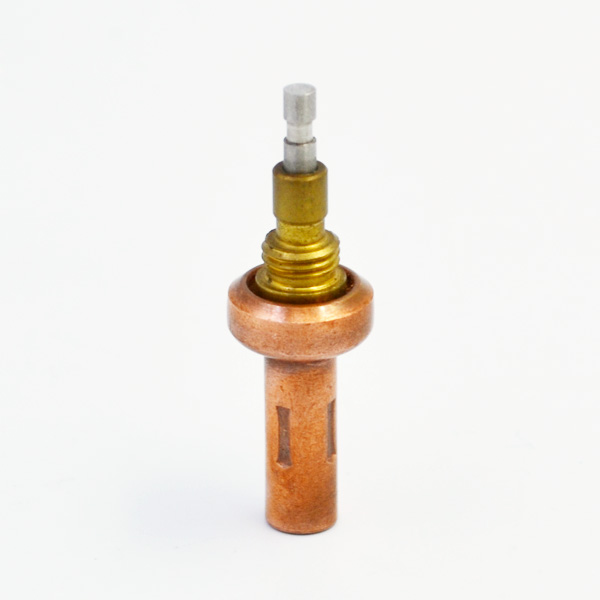Aiming at the requirement of accurately simulating the load spectrum under extreme conditions for the fatigue performance evaluation test system of key components of aerocraft, the state information and disturbance information of the system are estimated by designing an auto-disturbance rejection controller (ADRC) in the electric cylinder load system to solve the problem of accurately controlling the specified load spectrum under extreme conditions and without disturbance mathematical model.
Control problem; Solve the problem of system stability caused by disturbance caused by extreme condition change and system uncertainty. Through the simulation test, under the same external conditions, the force closed-loop ADRC control system of the third-order electric cylinder loading system has better control effect than the PID control, faster response speed and stronger anti-disturbance ability, which meets the requirements of high loading accuracy of the servo electric cylinder loading control system and repetitive load spectrum of the test evaluation system. And the requirement of high consistency and accuracy. The fatigue performance evaluation test system for key components of aircraft is used to test and evaluate the performance and life of key components of aircraft. It needs to simulate the actual flight industrial control and accurate control of load spectrum. Because of the structure of the test system and the requirement of extreme working conditions, the dynamic and continuous simulation control of load spectrum is realized by servo electric cylinder system. At present, the main problems of servo electric cylinder loading system are: the non-linear control problem caused by the extreme change of ambient temperature leading to the deformation of physical transmission structure, the large change of control characteristics of controlled objects and other factors lead to the low accuracy of load control and even large unstable working area; at the same time, the test system is tested. The periodic motion of components will also introduce larger load disturbance, such as load disturbance caused by reciprocating oscillation at a certain frequency at the load end, which forms a certain load fluctuation. On the other hand, when the set pressure is large, the system has contradictions between response speed and overshoot, which can easily cause impact on the loading system and even damage the mechanical system. Active disturbance rejection control (ADRC) technology does not depend on the precise mathematical model of system disturbance. By designing an extended state observer (ESO), the state information and disturbance information of the system are estimated to solve the problem of anti-disturbance control of the undisturbed mathematical model. By designing tracking differentiator TD, extracting input signal and its differential signal and arranging step input process, the contradiction between response speed and overshoot control is solved. In this paper, ADRC technology is applied to the load control system of electric cylinder to make the force closed loop of the system, improve the response characteristics of the system, compensate the load errors caused by load disturbance, and optimize the control effect. The load system of electric cylinder consists of servo electric cylinder, elastic link, pressure sensor and load rod end joint bearing. The inner ring of load rod end joint bearing can oscillate in a certain frequency and angle along the vertical direction of load shaft. Its simple structure is shown in Figure 1. From the above analysis, it can be seen that the controlled object is a third-order system. ADRC generally consists of three parts: extracting differential signals from input signals by differential tracker TD, thermostatic element giving appropriate transition stage; estimating state information and total disturbance information of controlled objects by extended state observer ESO; and using linear error feedback control law LSEF to estimate errors between given signals and estimated states. [e] decides the control law [4] [u0,] and combines the disturbance estimation compensation to obtain the final control quantity [u]. ] The system block diagram for controlling third-order objects is shown in Figure 3.
When the input is a constant load, it can be seen from Figure 6 that the response speed of ADRC is slightly faster than that of PID control in the adjustment rising stage, the former is 1.
9 s and the latter is 2.2 s.
When [t = 3] s disturbance is added, the fluctuation of the PID control curve is 20 N, while the ADRC is almost unaffected by the disturbance.
When the input is a sinusoidal load, it can be seen from Fig. 7 that both ADRC and PID control can track the input curve well before disturbance is added, and there is little difference between them.
After disturbance is added, the PID control curve fluctuates obviously with the frequency of disturbance, the fluctuation amplitude is about 30 N, the error is 3%, and the ADRC curve fluctuates clearly. The fluctuation amplitude is about 10 N, the error is 1%, and the fluctuation frequency is less than the interference frequency, so the curve is smoother. This paper establishes the mathematical model of force closed loop for the electric cylinder loading system, designs a linear ADRC controller, and applies it to the anti-interference control of the loading system. Compared with the traditional PID control, ADRC can arrange a suitable transition process for the loading system to make the adjustment stage smoother.
In the case of disturbance, the disturbance can be estimated better by the extended state observer, and the disturbance can be suppressed by disturbance compensation.

This paper provides a feasible loading method for the load system of fatigue testing machine, which has been applied in the fatigue performance test system of Aeronautical bearing and has achieved good stability and high precision control effect.
